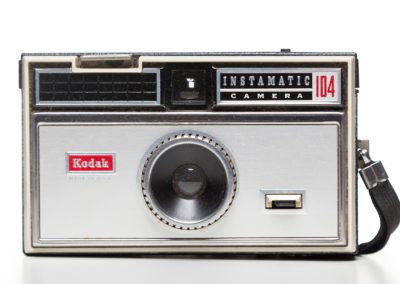As a relationship marketing company with over a decade of experience, we have addressed many of the common worries clients have about creating content for their audience. The most common concern we hear from entrepreneurs is that they believe their personal stories won’t be interesting. In our experience, this worry is far from valid. In fact, with the right storytelling method, you can turn even the most ordinary day-to-day experiences into extraordinary stories.
Here’s how to do it successfully.

What Separates A Boring And Interesting Story?
We all have that friend who can take any story, no matter how mundane, and turn it into an epic to rival Homer. We also all have that friend who can rehash a trip to the moon and bore you to sleep while doing so.
What gives?
Though it may sound harsh, a person’s storytelling method is often more important than the story itself. A great storyteller understands which details to amplify, which to omit, where to insert humor, where to insert sentimental emotion, and at what point they should begin and end the story. This skill takes time to develop, but it’s very powerful if you can master it.
To illustrate this point, let’s go over some basic principles behind good storytelling. Then I will share an example of storytelling in 2 forms: one example of poor storytelling and one example of competent storytelling. We will then dissect the key points of difference between the 2 tales and see how they relate to the principles of storytelling.
Ready? Let’s get started.
Let The Cream Rise To The Top.
On an average day, we are part of hundreds of interactions and scenarios. A minority of these events are likely story-worthy. If you’re new to storytelling, determining which interactions should and shouldn’t be shared can be daunting. However, the best way is simply by practicing and learning what people find interesting.
Try first to share a story with a friend or coworker. Take note of their tone, body language, and how they respond to the story. If they chuckle at something, take note of it. If you tell the story to 5 different people, you will likely have 5 different tweaks you can make to the story based on what your sample group reacted to. Then over time, the more you tell the story, the more refined it will become.
This process allows you to identify the key details in your story as well as where to put punchlines, what sort of vocabulary resonates the most, and which details to leave out. In other words, it allows the “cream to rise to the top.” Then you can move forward, taking the best parts of your story into future retellings and leaving the uninteresting parts out.
This also applies to the general subject matter. Sometimes, no matter how interesting we find a story, other people don’t see it the same way. In our experience, this is usually for one of the following reasons:
- The subject is niche or too complicated for a beginner with no background to understand.
- The listener requires excessive background information to understand the story.
- “You just had to be there.” In other words, the event was interesting when it occurred but cannot be re-created for an external audience well.
- You share too many irrelevant details without a comedic purpose.
- The story is too basic and requires more detail to be interesting.
That being said, rarely is the subject matter actually the issue when it comes to storytelling. Typically, it is one of the previously mentioned issues. We have had clients tell stories about their pets, family gatherings, or even their own private musings while washing the dishes, and they have seen great success. It’s just about separating the interesting details from the uninteresting stuff.
Use Your Unique Voice.
Great stories always have one thing in common: Whether it’s Morgan Freeman, Emily Brontë, or William Shakespeare, the most captivating storytellers always use their own voices and no one else’s. This gives their stories a distinctive feel that is uniquely their own.
You may think, “But what’s wrong with a little inspiration?”

Well, nothing outright. We all take inspiration from different sources. When you get into copying territory, things can get dicey. You wouldn’t want F. Scott Fitzgerald to try and copy the voice of Steinbeck when telling a story — you have Steinbeck for that. You wouldn’t want Sylvia Plath to try to copy Maya Angelou’s style — you have Maya Angelou for that. A copy is never as good as the original.
So, don’t shy away from using your voice when telling your stories. Lean into your preferred phrases and sayings. Employ your favorite adjectives and action words. Are you more flowery in your language or a straight shooter? A comedian or a satirist? Whatever your storytelling method is, use it. When writing from your perspective, you should try to be yourself, and no one else.
Embellish A Little.
While we’re not encouraging outright lying, the storytelling tradition of embellishment has a rich history that can be quite enlightening for aspiring storytellers. Back before people had easy access to video and photographic evidence (if you can imagine that), they shared events through storytelling. You know, the archetype of the old fisherman at the pub insisting the fish he caught that day was bigger than him. Even if the story itself is unbelievable, the human desire to believe amazing things occur in everyday life can bring us closer together.
In fact, research even suggests people feel warmer toward those who have told them a story — even if the details have been embellished. So, don’t hold back when telling your stories! Think about ways to amplify your story’s details with stronger language, hyperbole, and comparisons.
Here are some examples of easy embellishments to enrich your stories.
- Instead of saying, “We were going really fast,” say, “We were going so fast I was worried we might enter another dimension.”
- Instead of saying, “The snake was huge,” say, “That snake could have eaten my apple tree as a snack and my Honda for dessert.”
- Instead of saying, “I was scared to go down the waterslide,” say, “The waterslide was so daunting I could not have been tempted with all of the fine riches of Atlantis to go down it.”
As you can see, amplifying the details of your story can convey the same meaning while adding more intrigue to your tale. However, as the saying goes, too much of a good thing can be bad, so be careful about including too many exaggerated details, or you may lose your audience halfway through your story.
Choose The Right Words.
Whether you realize it or not, the words you use in your story can greatly impact how interesting it is. Strive to use top-tier words, not simplistic, bottom-shelf ones.
Let’s be more specific.
Adjectives like “sad,” “hot,” “big,” and others like them must go if you want to improve your storytelling method. Nouns like “dog,” “man,” “store,” “girl,” and other basic nouns must go as well. You need to be specific if you want your story to really shine.

For example, one of these 2 statements has been greatly boosted by nothing more than the word choices. See if you can spot which one.
- Sam and I went to the big new store down on the corner with her little dog and saw a girl from our school. We said “Hi” to her and went to get some candy.
- Sam and I went to the enormous new Piggly Wiggly on the corner with her tiny basset hound and saw Martha, one of our classmates. We bid Martha a good day and went to purchase some of the many delightful confectioneries available to us.
As you can see, more descriptive words improve the intrigue of your overall subject matter. So, think carefully when choosing your vocabulary — you also want to ensure that the words you choose to tell your story are appropriate and used correctly too!
Look At ‘The Goose Attack.’
I told a story to a coworker several weeks ago about a run-in I had with an ornery goose at my apartment complex. This is a good example of the kinds of stories our clients often think are too boring to use for content but are actually storytelling gold mines.
See if you can spot the key differences in these 2 tellings.
Version 1
I was walking home from my apartment the other day when a nesting goose attacked me. I was so scared. Both my husband and I screamed and ran all the way back to the apartment. Apparently, you’re not supposed to turn your back on a goose, which, in hindsight, was a mistake.
Version 2
We assumed we were safe, but we couldn’t have been more wrong. The goose was here.
Despite being a good 8 feet away from the goose and watching him simply stare at us initially, things were about to take a turn. As we began to approach the bridge (which, by then, was a good 13 feet away from his nest), we heard hissing.
“He’s after us! Go, go!” I shouted to my husband as we hopped from stone to stone on the bridge, trying not to slip in our haste.
When we reached the other side of the bridge, we breathed a sigh of relief — peace at last. Surely, now that we were much farther from the goose, he would be content to waddle back to his nest.
But as we headed toward our apartment, we heard sounds that made our blood run cold: the violent flapping of a Canadian goose’s powerful wingspan and hissing.

As we both turned in unison, we saw the goose racing toward us, hissing with its maw wide open. Stricken to our very core at the sight of this wild bird barreling at us, my husband and I both shrieked as we abandoned one another. I ducked behind a tree to avoid the beast as my husband sprinted further up the pathway, wielding our grocery bag full of canned goods like a shield. It was his only defense.
Seemingly satiated by our abject terror and the knowledge that he was, in fact, the dominant of the 3 of us, the goose glared at us as we sprinted to our apartment. We busted up laughing as we closed the door behind us, relieved we had escaped with our lives.
I looked up “goose attack” today, and apparently, we did everything wrong.
We shall not be using the bridge again. It belongs to the goose now.
Can you spot the differences?
The first story is light on detail, simplistic, and, to be frank, boring. The second includes stronger word choice, embellished details, drama, and humor, and it’s more specific. While both examples are the same story, one is much more engaging than the other. It’s the same with your storytelling method. If you use your own voice, choose descriptive words, embellish a few details, and integrate humor, then even the most mundane event will become a captivating story. In fact, we’d say you can turn the ordinary into the extraordinary.






